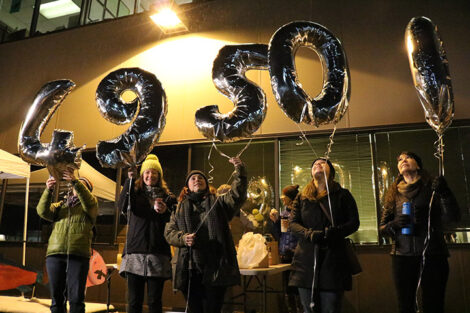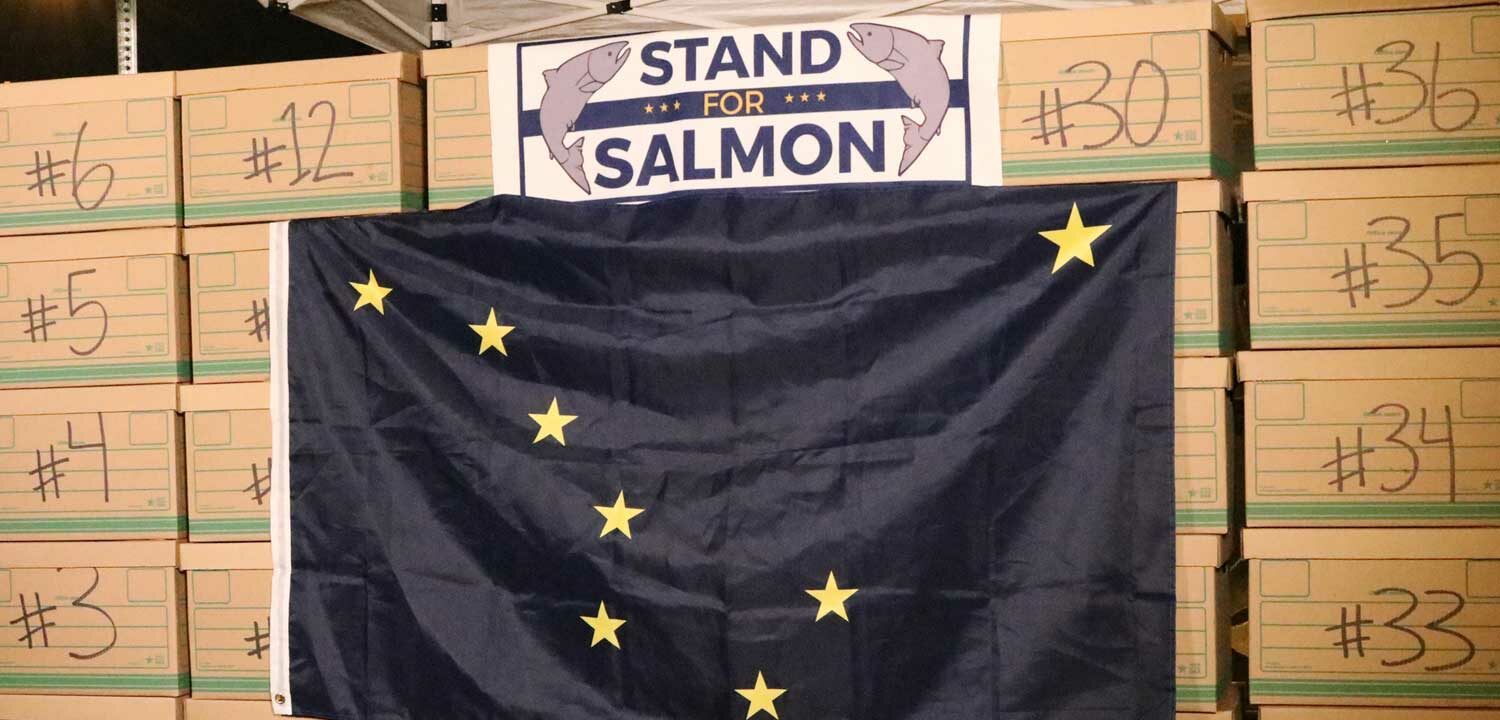Ballot initiative to improve salmon habitat protections hits signature mark.
Salmon advocates working in Alaska are one step closer to long-term certainty for the state’s world class salmon habitat, thanks to progress on a ballot initiative that will improve development standards in salmon habitat.
On January 16, fishermen, native leaders and other salmon advocates submitted nearly 50,000 signatures from across Alaska to qualify the ballot initiative.

The initiative establishes clear development standards to prevent severe harm to salmon and it would allow much greater public input around major development projects in Alaska.
The signatures, pending state certification, mean the ballot initiative would appear before Alaska voters later this year.
First, the Alaska Legislature will have a chance to take up a bill that similarly tackles the issue of improving development standards around salmon habitat. The Legislature went into session earlier this week.
The reforms are aimed at protecting all of Alaska’s world-class salmon habitat, including some of the planet’s last great salmon strongholds such as Bristol Bay.
The state law governing development in salmon habitat only calls for the “…proper protection of fish and game,” with no definition of what that means. It has been vague enough to allow wide interpretation and political interference. It also hasn’t been updated since statehood nearly 60 years ago, and doesn’t take into account the large body of salmon science built over the last two generations. Additionally, there is no public noticing and nor public comment period for major projects seeking state permits to develop in salmon habitat.
Alaska’s salmon runs are under increasing pressure from large development projects such as the revived Pebble Mine, slated for the headwaters of Bristol Bay’s best salmon rivers that last year produced 60 million sockeye.
“Good-intentioned, yet irresponsible, development in the Lower 48 wiped out wild salmon populations,” said Gayla Hoseth Second Chief of the Curyung Tribal Council and one of the ballot initiative sponsors. “This is our chance to make sure Alaska does not repeat that history.”
Wild Salmon Center staff in Alaska have been working with our partners in the Stand for Salmon campaign to update the law governing development in salmon habitat.
You can follow the latest on the Stand for Salmon campaign at standforsalmon.org, and don’t forget to take the pledge to stand up for Alaskan wild salmon.
Alaska electoral laws require us to say that this post is paid for by Wild Salmon Center Political Activities Fund, Portland Oregon: Top Three Donors Guido Rahr, Portland, OR, David Finkel, Portland, OR, Ken Morrish, Ashland, OR.

